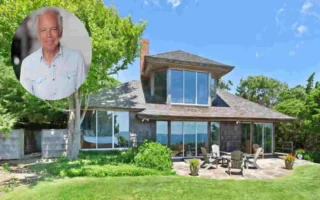The enigmatic Thomas Shelby’s residence has captivated millions of viewers worldwide, becoming an architectural icon of the hit series Peaky Blinders. While the fictional gangster’s home represents power and ambition in 1920s Birmingham, the real filming locations tell an equally fascinating story.
Arrow House: The Grand Estate
The primary residence featured as Tommy Shelby’s mansion is actually Arley Hall in Cheshire, England. This stunning Jacobean-style manor, built in 1832, serves as Arrow House in the series – the grand estate Tommy purchases to mark his rise from Small Heath’s grimy streets to legitimate high society.
The distinctive features that make this location perfect include:
- Ornate Victorian Gothic architecture with elaborate stonework
- 8 acres of meticulously maintained gardens
- Wood-paneled interiors showcasing period-appropriate craftsmanship
- A grand dining hall where Tommy conducts his most crucial meetings
The Small Heath Origins
Before Arrow House, Tommy’s journey begins at Watery Lane in Small Heath. The production team recreated this working-class Birmingham neighborhood at the Black Country Living Museum in Dudley. These modest terraced houses, with their narrow corridors and coal-dust covered walls, represent the Shelby family’s humble beginnings.
The stark contrast between these two residences mirrors Tommy’s transformation from street gang leader to Member of Parliament, making the architecture itself a character in the narrative.
Visiting the Locations Today
Arley Hall opens its doors to the public from March through October, offering guided tours where fans can walk through Tommy’s study, the infamous dining room, and the gardens where pivotal scenes unfolded. Visitors often note the haunting atmosphere that still lingers in these rooms, enhanced by the estate’s preservation of its Victorian character.
The hall charges £9.50 for garden access and £6 for the hall tour, with combination tickets available. Special Peaky Blinders themed events occur throughout the year, complete with 1920s music and costume exhibitions.
Architectural Significance Beyond the Screen
What makes Thomas Shelby’s house remarkable extends beyond its television fame. Arley Hall represents one of the finest examples of Victorian Gothic Revival architecture in England. The estate’s chapel, built in 1845, features stunning stained glass windows and has been recognized as a Grade I listed building.
The interior showcases:
- Original Jacobean oak paneling dating back centuries
- An extensive library housing over 3,000 first editions
- Period-appropriate furnishings meticulously maintained since the Victorian era
The Cultural Impact
Thomas Shelby’s house has influenced modern interior design trends, with “Peaky Blinders style” becoming a recognized aesthetic. Dark wood paneling, vintage leather furniture, and crystal decanters have seen renewed popularity as homeowners seek to capture that distinctive 1920s gangster elegance.
The location has also boosted local tourism significantly, with Cheshire reporting a 30% increase in visitors since the show’s premiere. This “Peaky Blinders effect” has revitalized interest in Britain’s industrial heritage sites.
Planning Your Visit
For the ultimate experience, visitors should:
- Book tickets in advance during peak season (June-August)
- Allow 3-4 hours to explore both house and gardens
- Check for special filming location tours offered monthly
- Visit the on-site café housed in the Tudor Barn
The estate sits just 20 minutes from Manchester Airport and 45 minutes from Birmingham, making it an accessible day trip for international fans.
Thomas Shelby’s house stands as more than just a filming location – it’s a testament to British architectural heritage and the power of storytelling through setting. Whether you’re drawn by the Peaky Blinders connection or the historical significance, Arley Hall offers a glimpse into a world where fiction and reality brilliantly intersect.



